Shopify supports the full range of SEO elements that can help its users succeed, and this guide is going to demonstrate every aspect of Shopify SEO, so you can get your store and it's products ranked on Google.
Several online shopping platforms have come to light over the years since e-commerce was first established. While many of them have made a name for themselves, Shopify has grown to become one of the most popular and diverse. From helping sellers showcase their wares to streamlining the selling process, this particular platform caters to numerous retail needs.
However, working with an online platform like Shopify is only one piece of the puzzle. Retailers must also prove their relevance to search engines and boost their online visibility to truly achieve success.
That’s where search engine optimisation comes into play. It’s also another arena in which Shopify excels.
What Is Shopify?
Shopify actually got its start in 2004 as an online store selling snowboards.
Its founders, Daniel Weinand, Scott Lake, and Tobias Lütke found that none of the e-commerce platforms available at the time fully met their needs and expectations. As a computer programmer, Lütke decided to create a customised platform to fulfil the store’s requirements.
From there, Shopify was born.
It was officially launched in 2006, and it has branched out significantly since that time. Over the years, Shopify evolved from a basic, tailor-made platform designed to meet the needs of its creators to a comprehensive tool that suits the demands of all types of retailers.
Today, Shopify offers a wide range of benefits for those in the retail sector. It’s a cloud-based platform that provides a long list of apps, plans, and other features for sellers to take advantage of. It focuses on the needs of brick-and-mortar establishments and online stores alike. Additionally, sellers can use the platform to manage their inventory, sales, and many other crucial aspects of their stores.
Shopify allows vendors to sell through multiple channels as well. They can create new online stores or improve upon existing ones. They can also make their products available on social media outlets, various websites, and marketplaces like Amazon through Shopify.
Sellers can likewise use the platform’s physical POSs for in-store sales, accepting payments at craft fairs, and completing transactions at any other locale where an internet connection is available.
Why Is SEO Important for E-Commerce Stores?
Many newcomers to the e-commerce arena think search engine optimisation isn’t really relevant to them. After all, if they post products for sale online, shoppers are bound to find them, right?
Few things could be further from the truth.
For eCommerce clients we have worked with - SEO is their most profitable source of traffic… it doesn't come as quick, but once SEO takes hold and is executed properly, it's an unstoppable force of new and returning customers.
Boosting Sales Through SEO
Obviously, the ultimate goal of e-commerce stores is to make sales and increase profits. Though a store’s products are important, they’re only part of the bigger picture.
Well-executed SEO covers many of the additional factors that can drive an e-commerce site to the top.
User experience encompasses a variety of aspects from the appearance and layout of an e-commerce site to the relevance of the content being displayed for consumers to view. SEO can bolster many of those factors. In doing so, it can increase conversion rates and improve customer satisfaction among many other benefits.
Why Use Shopify For SEO?
As mentioned, Shopify is an all-inclusive platform. That means it covers an array of requirements for retailers.
SEO certainly isn’t left out of the mix.
This platform makes available numerous SEO tools and resources for its members. Some of them are built into Shopify’s themes and APIs whereas others are left up to store owners to handle. Users can even enlist the assistance of Shopify’s SEO specialists if needed.
Fostering Crawlability And Indexability
For an online store (or any website for that matter) to be visible on the internet, it must catch the attention of search engine web crawlers. From there, it needs to be indexable, meaning those crawlers must be able to scan the information and products available on the site’s web pages and determine when and to whom they would be relevant. SEO enables crawlers to do just that, so they can store websites in their memory banks and bring them up in users’ search results.
Increasing Visibility
With crawlability and indexability at optimal levels, a search engine is more likely to bring up a website in users’ SERPs at all the right times. Properly executed SEO can ensure an e-commerce store ranks higher in those search results as well. Most consumers aren’t likely to look beyond the first page of search results, and the majority don’t scroll beyond the first few results on that page. As such, the higher an e-commerce store ranks, the more likely it is to be seen.
Bringing In Leads
Once an e-commerce store is more visible online, it’s more likely to catch the attention of shoppers. Those who are searching for the types of products a store has to offer will see its website in their search results and start to dig deeper. Whether they’re ready to make a purchase or just beginning their research journey, they’ll click on those high-ranking stores to fulfill their needs.
No matter where those shoppers are in the conversion process, they’re qualified leads. Each step they take after visiting an e-commerce site draws them further in. Once they’re hooked, they’ll become paying customers and, ideally, generate repeat business as well as word-of-mouth advertising. Without SEO, they’ll never even know a store exists.
Improving The User Experience
Providing a positive user experience for visitors is essential. Several underlying SEO factors are designed just for that purpose. If they’re all carried out correctly, they’ll ensure visitors have the best possible encounters with an online store.
Those SEO elements help to make sure an e-commerce site and its pages load properly across mobile devices and desktops. They also make products easier to find. At the same time, they create a smooth transition from one web page to the next while facilitating the purchasing process on various levels.
User experience encompasses a variety of aspects from the appearance and layout of an e-commerce site to the relevance of the content being displayed for consumers to view. SEO can bolster many of those factors. In doing so, it can increase conversion rates and improve customer satisfaction among many other benefits.
Exploring Shopify’s SEO Solutions
Shopify offers a variety of SEO tools and resources for e-commerce stores. They foster branding, help users’ websites rank higher, improve the user experience, and allow retailers to sell across multiple channels to name a few of their advantages.
From technical and on-page factors to off-page links and beyond, the platform aims to help users make the most of search engine optimisation and all its benefits. We’ll take a more in-depth look at many of those aspects shortly.
Shopify Themes and Their SEO Impact
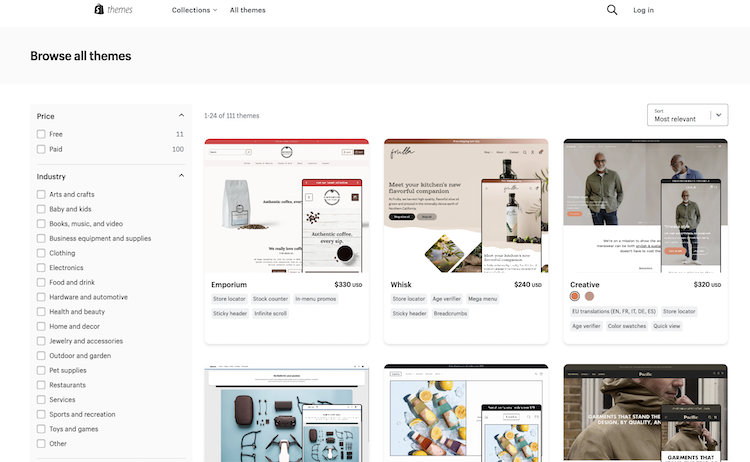
Shopify offers a selection of themes and templates for vendors to choose from. This allows them to choose the one that fits their niche and brand. Of course, they can also customise available themes or build their own from the ground up using Shopify’s theme- and website-building tools.
Website themes can have a significant impact on SEO.
Those on Shopify generally feature integrated responsive design, making them suitable for both mobile and desktop visitors. Regardless of the devices shoppers are using, the available Shopify themes automatically adapt and help to provide a seamless user experience.
Provided themes are also optimised to load quickly and accurately. That’s exceedingly important in the eyes of both human users and search engines. Google tends to rank websites higher in search results if they load in three seconds or less.
Human users aren’t usually willing to wait more than three seconds for a site to load, either.
Shopify’s themes come with optimised sitemaps as well. That, alone, greatly improves a site’s crawlability and navigability. By extension, it can improve the site’s SEO and ranking.
Those are only a few of the ways Shopify themes can have a positive impact on SEO.
One Downside to Consider
With so many themes available on Shopify, choosing the right one can be difficult. Retailers are encouraged to try out various themes and templates and even take them for test runs.
Doing so helps users find themes that mesh with their brands and are most appealing to visitors. Still, once store owners find the ones that work for them, they’re advised to stick with them.
Although updating inventory and information is essential for remaining fresh and relevant, many Shopify members have found that switching themes can actually hamper their SEO efforts.
Keep in mind, though, that’s a standard rule of thumb in the online world.
Anytime a company revamps its website or makes major changes, its ranking, traffic, and other factors are bound to take a temporary downturn.
Shopify On-Page and Website Optimisation Capabilities and Limitations
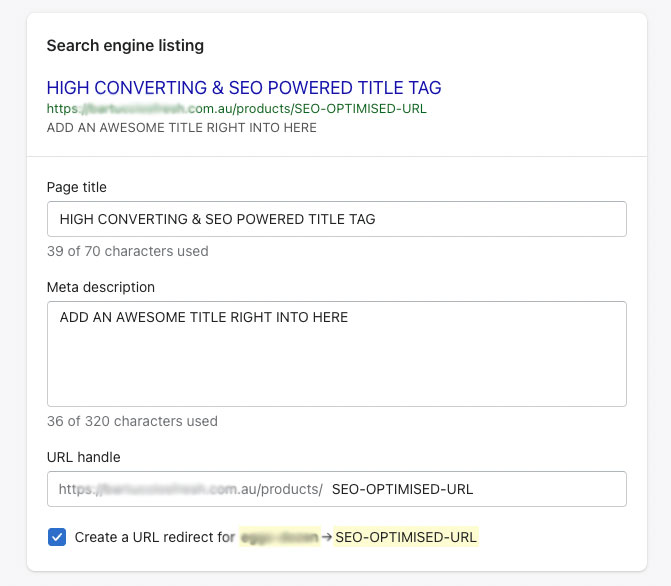
On-page SEO entails a range of factors that help websites achieve higher rankings in Google for various keywords and search queries.
These include, but aren’t limited to, written content, images, title and meta tags, and product descriptions. Keywords are critical here, and conducting extensive keyword research paves the way to success.
First off, online retailers need to figure out which keywords they want or need to rank for. That depends on the products they have to offer.
Using the right keywords in written content, titles, tags, and other areas of a website will greatly improve its visibility when consumers conduct searches for those words and phrases.
Search engines look for websites that are relevant to users’ searches, and keywords are among the factors they take into account.
Keyword Research Tools
Though Shopify doesn’t offer its own keyword research tools, it allows members to connect to an array of outside resources for this purpose.
It also provides blog posts and other sources of information to help users learn more about keyword research, competitor keyword analysis, and other ways of determining which terms they need to be using on their websites.
Keyword research helps e-commerce store owners in many ways. It can give them greater insight into consumers’ search habits and their audience’s expectations.
When put into practice, it can also give their websites a much-needed boost in visibility and find keyword opportunities they may be missing out on.
Title Tags
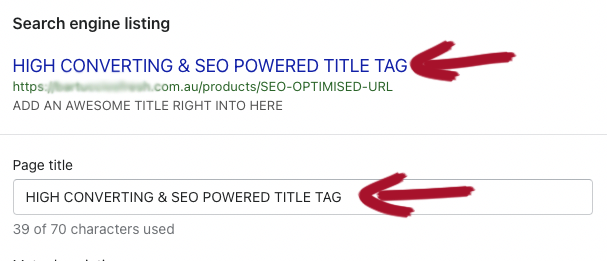
Title tag optimisation is particularly vital for e-commerce websites.
Titles are the first things consumers see when sites appear in their search results. Page titles come into play when people browse websites to see their products.
At the same time, Google bases much of a website’s ranking positions on keywords used in title tags as compared to the keywords people use in their queries.
Several considerations factor into the equation when optimising title tags. Placing descriptive, relevant keywords near the beginning of title tags is advised. Adding branding to the mix is also recommended.
Each page of a website should have its own unique title tag. Titles that are no longer than 60 characters tend to rank higher. There’s no risk of essential portions of the tags being cut off when they’re displayed in search results if they’re in that range, either. Pixel width and other factors affect how titles are displayed and ranked as well.
Shopify aids in some of those aspects, but members may need to do their own part to spruce up their title tags and make them more concise.
Meta Tags
Title tags are considered meta tags, but many other items are also included in this category.
These tags, like other aspects of SEO, help search engines and people understand what a website has to offer and where to find what they’re looking for.
They can determine the snippets Google displays for users to see, too. Those are some of the main purposes of meta tags.
Shopify produces meta tags for websites created on the platform. Shop owners may find that they need to improve upon those, though. While Shopify cleans up the coding and covers the technical aspects, members can add keywords, descriptors, and other elements to make metadata more appealing.
Access Shopify MetaData the following way: Settings > Metafields
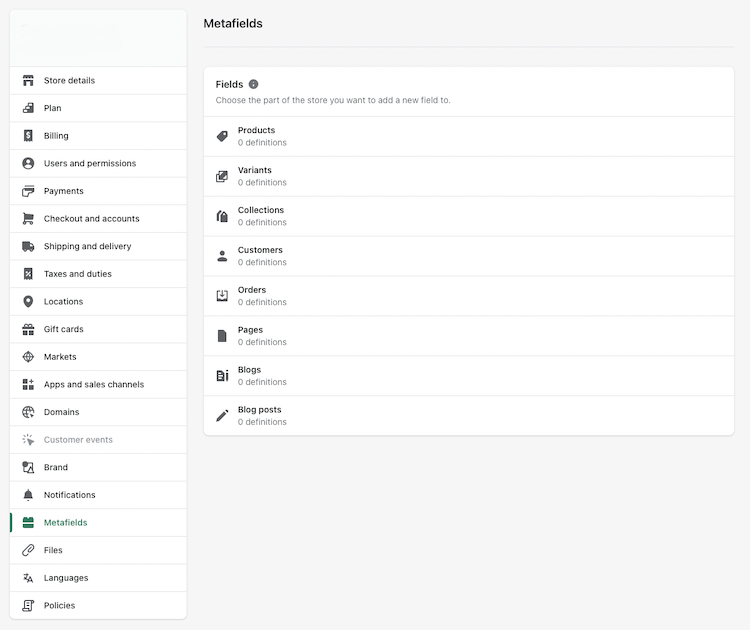
Image Optimisation

Image optimisation is yet another consideration to keep in mind when building a store on Shopify. By nature, Shopify adheres to best practices in this regard.
The platform automatically governs some image file sizes and dimensions to ensure they load properly and don’t interfere with website performance. Its responsive design also makes sure images load correctly regardless of the device a consumer is using.
Store owners can further improve their image optimisation by giving their images descriptive names and captions that include relevant keywords. Adding well-thought-out alt attributes, using thumbnails sparingly, and keeping moderation in mind with unnecessary decorative images will help with SEO as well.
Testing images to analyse their appearance and loading capabilities is strongly advised.
Product Descriptions
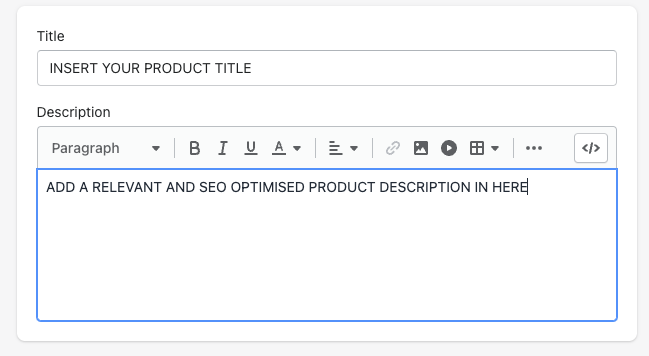
Product descriptions are equally essential for e-commerce SEO. Store owners are allowed to create descriptions for all their products via the Shopify platform.
Keywords can, and should, be used in descriptions, but optimising them for human readers by explaining the value the products can provide help to boost sales.
Be sure to avoid keyword stuffing and using duplicate content as both of those mistakes can detract from website ranking rather than improving it. Using meta tags and other beneficial measures will further bolster those descriptions. After members add product descriptions, Shopify takes the reins.
It creates tags based on the information included in the descriptions and chooses snippets for products along with other helpful tasks. It also incorporates those tags into websites’ source codes. As noted, though, users may want to modify those tags and snippets.
Content Optimisation
We’ve already covered many of the SEO factors that improve website visibility and increase traffic.
Content can promote those aspects as well as branding, sales, customer satisfaction, repeat business, and a store’s positive reputation. That’s dependent on how the content is created and used.
Content includes all the elements displayed on a website from images and videos to product descriptions and blog posts. Written content is especially important for e-commerce companies.
While their products may be the main focal points, written content can help propel them to new heights. It gives readers helpful information about a company and its brand and products. It’s also a powerful venue for keyword use. Well-written content that provides value for visitors can improve a website’s ranking in various ways.
Those include proving its relevance to prospects’ online searches and making it more crawlable and indexable. That also equates to better visibility, more traffic, and more conversions. Shopify offers a vast selection of tips and advice for optimising website content.
When combined with the platform’s automated optimisation features, retailers have numerous options at their disposal for taking their website content to new levels. Although the platform doesn’t directly edit written content for SEO, readability, and other factors, it gives users the tools they need to do so themselves.
You can learn more about optimising your website content in our "On-page SEO Guide for eCommerce sites"
Shopify Blogging Capabilities and Limitations for SEO
Blogs give businesses a wealth of opportunities.
Extra space for relevant keyword use is one advantage, but it’s only the tip of the iceberg. Blogging allows e-commerce companies to showcase their products and features in far more in-depth ways than web pages and product descriptions alone.
Additionally, blogs give businesses a chance to speak to visitors in different areas of their conversion funnels, providing helpful information that’s relevant to each category of readers. That can help build trust and credibility. Furthermore, blogging allows retailers to highlight their brands as well as their visions and personalities.
Shopify provides shop owners with a blog engine for posting content that will catch Google’s attention and draw prospects further along their conversion funnels. It also allows them to post links to their blogs on product pages, social media outlets, and other venues where they’re likely to be seen and explored by prospects.
Some retailers already have blogs on other websites. Shopify caters to them as well.
They can connect their blogs to their Shopify stores to garner even more attention for their informational and entertaining content. Shopify doesn’t create blog posts for its members, but it certainly opens up numerous doors for them in this regard.
Many experts say the platform’s blogging solutions are more than adequate for most e-commerce stores’ needs.
Here are 10 Steps To Setting Up Your Blog On Shopify
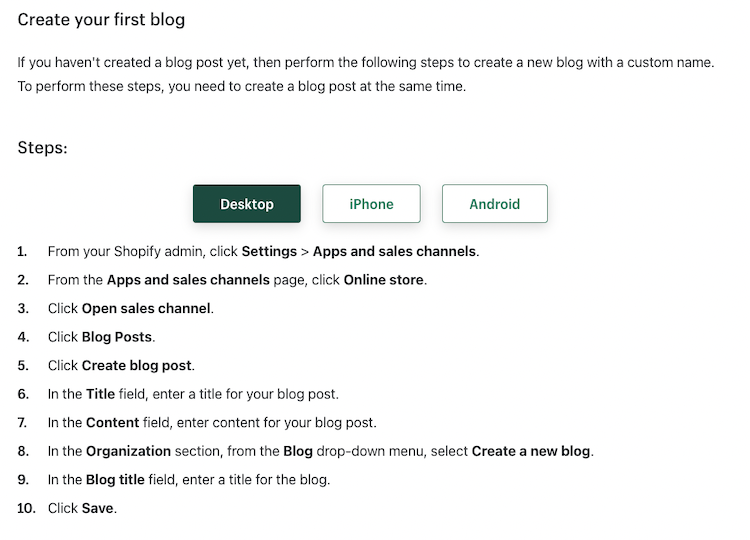
Shopify Technical SEO Capabilities and Limitations
Technical SEO includes all the behind-the-scenes factors that affect how websites load and perform.
It can improve crawlability, indexability, and visibility. It also impacts the user experience.
Though search engines and human visitors never actually see the technical elements of SEO, they can definitely see their results.
Because of that, Shopify incorporates countless technical SEO factors into its themes and other portions of its platform. That automatically helps store owners reap the rewards. It also has a few limitations, though.
Sitemaps
Sitemaps are crucial for websites.
They’re basically lists of sites’ pages, images, and other features. That gives search engines a rundown of what’s on a website, making it easier for them to crawl and index everything. While this is helpful for all websites, it’s especially important for e-commerce sites because they generally have numerous pages and other features that need to be crawled.
Sitemaps likewise help to establish relationships between various pages of a website. For example, they may show correlations between certain products and collections on an e-commerce site. From the perspective of visitors, sitemaps help simplify website navigation among other benefits.
Shopify creates sitemaps for all its store owners to eliminate much of the hassle and confusion involved in the process. Its sitemaps aren’t always perfect, though. Users must submit those sitemaps to Google for them to be crawled and indexed. Store owners also need to have a Google Search Console account.
With that, Google will send a report detailing any errors, duplicate URLs, and other issues it finds with a submitted sitemap. From there, users will need to make the necessary adjustments to ensure their Shopify sitemap is fully optimised.
URL and Site Structure
URL and site structure are important components of SEO as well.
If a site is structured properly, Google can quickly and easily find and index its key content. Optimal site structure also gives Google helpful insight into what an e-commerce store is selling, which niche it fits into, and other pertinent details. URL structure can have the same effect.
Another way Shopify fosters SEO is by automatically structuring users’ stores following e-commerce industry best practices. This includes arranging pages according to hierarchy and using more readable URLs to name a few.
Shopify also makes it fairly simple to add new products and categories along the way without upsetting a website’s existing structure. Store owners sometimes find they need to modify aspects of their site structure and URLs for more effective SEO. Though it’s not necessarily required, it could be helpful. Those modifications could include creating more descriptive file names for visuals and URLs for web pages.
To change image names in the Shopify platform, users will need to apply descriptive names to their visuals before uploading them. If images that have already been uploaded to the platform need to be renamed, they’ll have to be replaced.
Users may want to make their menu titles and link texts more descriptive, too. While heavily altering URLs isn’t recommended, or even possible on the Shopify platform, small changes can be made for SEO refinement. Those measures help to make website components easier for search engines and people to understand.
They can be a bit difficult to handle in the Shopify platform. Plenty of resources are available to guide store owners through those processes and ensure users remain on track with SEO best practices.
One APP that will go a long way is the YOAST SEO for your shopify store. One of the functionalities of this app is to allow you to control the Slug of your pages, products etc (and much more).
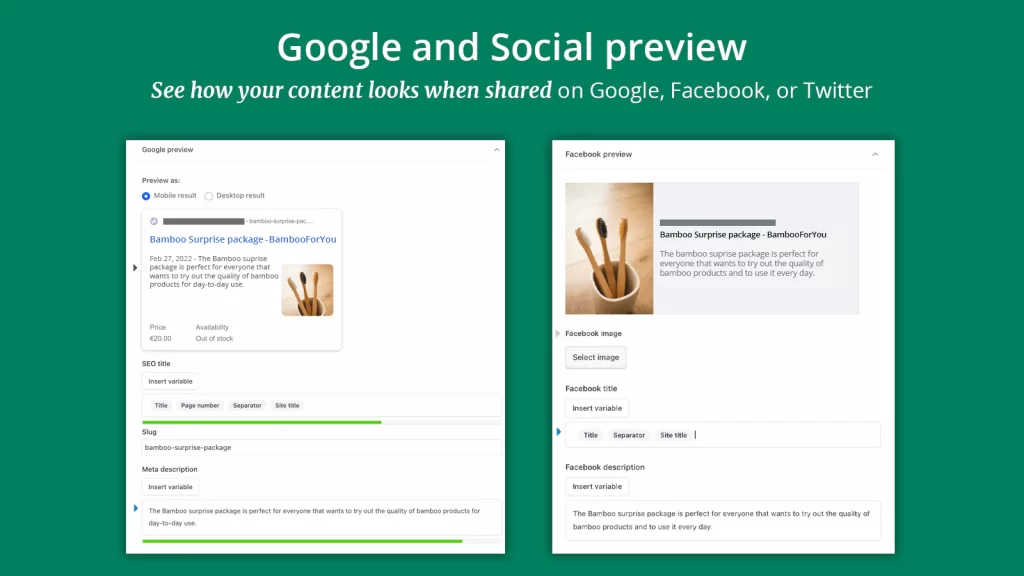
Adding Tags
Adding tags to images and other facets of a website can also improve SEO and search engine ranking. Tags help to add more structure to a site.
They can also apply text descriptions to images that won’t load along with other helpful tasks. Shopify routinely adds tags to images and additional items as needed. The platform has made resources available to help users fine-tune this phase of the SEO process.
SIDENOTE: don't go overboard here, you can run into some serious technical SEO issues and duplicate page issues that may decrease the qualify of your site. If you don't understand how to use tags effectively we recommend to not use them to start with.
Best Shopify Apps and Tools For SEO

Shopify does its part to support members’ SEO efforts.
It also lists an array of apps in its app store to help retailers ramp up their SEO strategies. Numerous outside SEO tools can likewise be used to bolster various elements of SEO.
Some of the most in-depth free tools for Shopify SEO are:
- Ahrefs
- Semrush
- Wordstream’s keyword research tool
- MozBar
- SEO Review Tools
- and Google’s Keyword Tool.
Many others are available, but these offer the most extensive solutions among free SEO tools. Each one helps store owners find keywords and use them to the fullest benefit. MozBar provides helpful metrics whereas SEO Review Tools covers website audits, reporting, and other necessities.
In terms of Shopify apps, several options are available to e-commerce stores.
These include:
- SearchPie, Smart SEO
- Avada’s SEO Image Optimizer
- Beae’s Landing Page Builder
- Swift Page Speed Optimizer
- SEO King
- Yoast SEO
- Schema Plus
For SEO, to name just a few.
Shopify has multiple pages of SEO apps, each of which is designed to improve website ranking, functionality, user experience, and other important elements.
Shopify Platform Analysis
Shopify brings e-commerce stores a long list of benefits. It was designed to fill the voids left by other platforms, so its very purpose is to meet the full range of online retail needs.
Take a look at a brief synopsis of some of the platform’s primary features and functions.
Marketing Capabilities
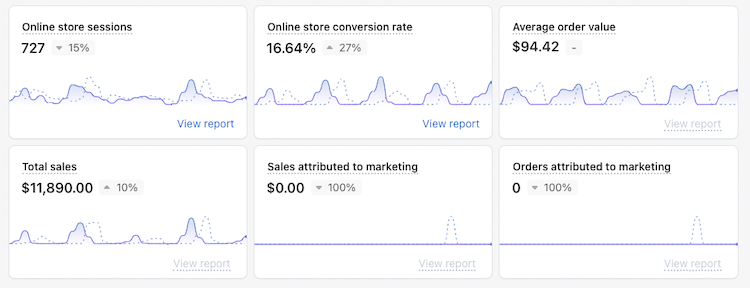
E-commerce stores can take advantage of multiple marketing opportunities through Shopify.
It allows users to find their target audiences, display their products and content, develop targeted marketing campaigns, and manage their relationships with customers among numerous other solutions. It also provides insightful analytics tools to measure the effectiveness of users’ SEO and marketing strategies.
Store Functionality
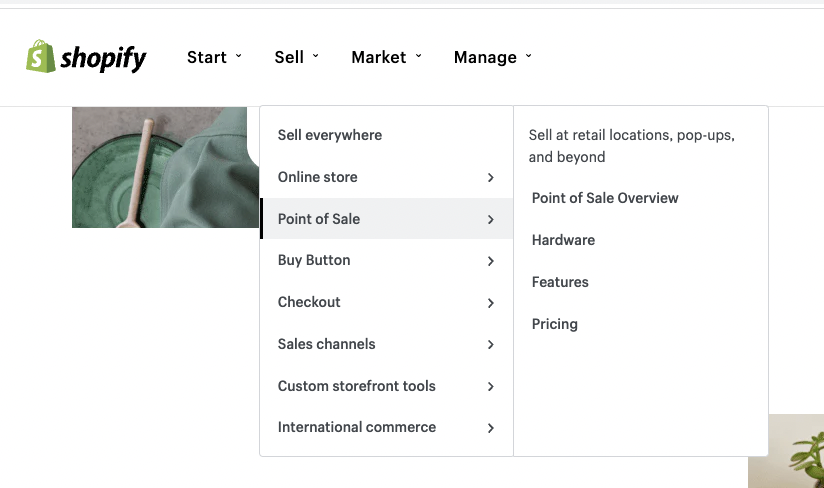
Shopify stores are among the most functional and consumer-friendly e-commerce sites currently available.
Creating positive experiences for both retailers and customers is one of the platform’s main goals.
At the same time, store owners are allowed to showcase unlimited products, communicate with customers, accept online payments, and integrate other portions of their online presences.
Unique Features To Shopify
While Shopify offers a wealth of helpful tools and solutions for e-commerce stores, certain features stand out.
For one, it extends a 14-day free trial to new users. It also works with around 70 payment gateways.
Its heightened focus on SEO also sets it apart.
Gateway Options

Several gateway options are available with Shopify, including the platform’s own payment gateway. It also works with Stripe, Amazon Pay, Square, and Paypal. Those barely scratch the surface.
Shipping Options
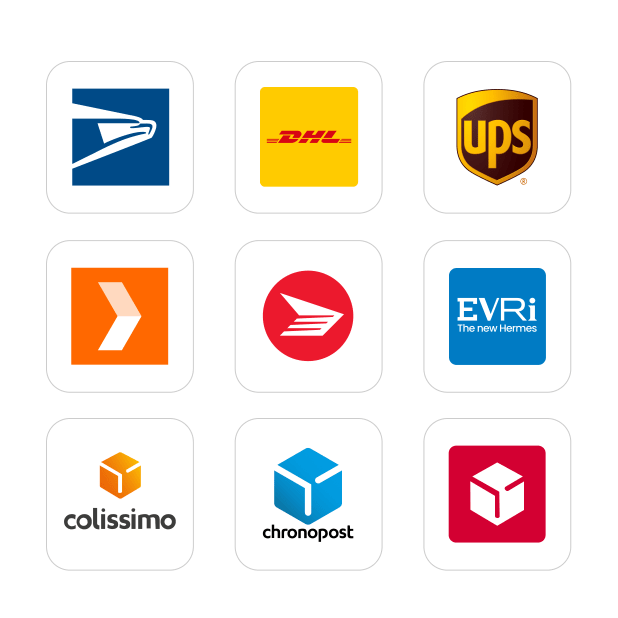
Shopify members can purchase and print shipping labels directly from the platform. They can ship through Canada Post, Sendle, USPS, UPS, and DHL. International shipping options are available as well.
Those are only a few of the features that have helped Shopify to become one of the world’s leading e-commerce platforms. It’s an inclusive platform that spans from store building to ongoing SEO maintenance and beyond. It’s made for stores of all sizes and offers a multitude of resources and support for users to draw from.
International SEO Capabilities of Shopify
Local and national SEO can be difficult to master; international SEO is even more complex. After all, it varies depending on the audience being targeted, search engine algorithms, consumer search and shopping behaviours, and numerous other factors. Shopify’s dedication to SEO for its users carries over to the international realm.
The platform has spread into 175 countries and can be translated into numerous languages. It offers tools specifically for international SEO as well. Users who want to take their sales global will need to purchase the right plans to do so because not all Shopify plans allow for international e-commerce. They must also submit individual sitemaps for each country’s website to Google for analysis.
Shopify Versus WooCommerce
Shopify is a comprehensive e-commerce platform that also serves brick-and-mortar stores. It’s one of the world’s leading e-commerce platforms at this point, and it’s constantly gaining more ground. WooCommerce is also a highly favoured solution in the e-commerce sector though it’s a plug-in designed to allow people to sell products through WordPress websites.
Considering the popularity of both e-commerce giants, many people wonder which one might best suit their needs. Per user ratings, both options pan out equally in terms of available features and ease of use. WooCommerce comes out slightly ahead in the user-support department.
Shopify, on the other hand, is the clear winner when it comes to sales-specific solutions and overall value. Though WooCommerce seems to offer more customisation features than Shopify, the latter is touted for its user-friendliness. It requires less technical know-how and allows retailers to set up shop much faster than WooCommerce.
Some experts indicate that WooCommerce is better for larger stores and those that rely on e-commerce as a secondary business element.
If you'd like to learn more about WooCommerce you can read our full WooCommerce SEO Guide here.
How To Run A Successful SEO Campaign On A Shopify Site
All that being said, it’s time to explore ways for sellers to amplify the benefits of Shopify. This largely revolves around the SEO components of not only the platform but e-commerce in general. Consider incorporating the following tips for creating and maintaining a successful SEO campaign through Shopify.
Optimise Your Shopify Site Structure
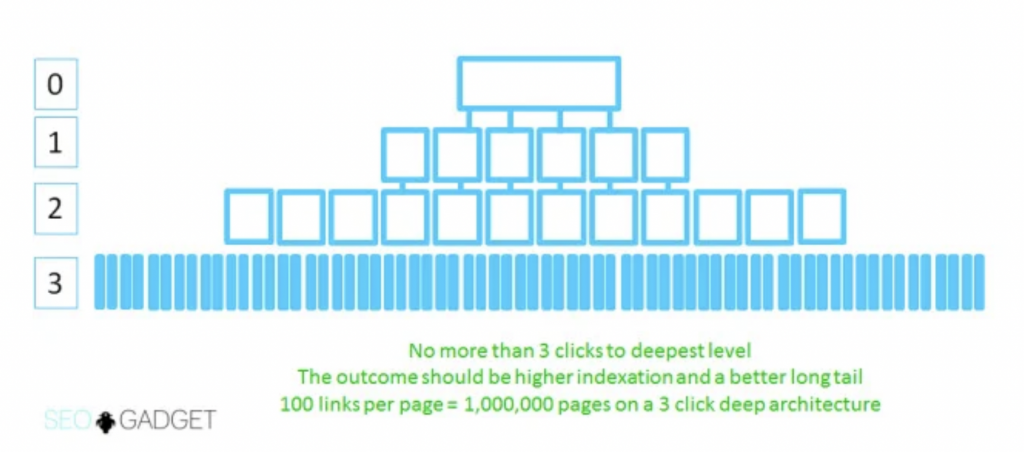
An optimised site structure fosters SEO by benefiting both sellers and their website visitors.
It makes finding the important pages and components of a website easier for search engines. That makes them more likely to crawl and index those items and make them visible in relevant searches.
Optimising a store’s site structure also allows users to determine which pages Google should emphasise and which ones should be secondary or altogether ignored. It makes for easier updates as a seller adds or removes products and content, too.
Optimised site structures can improve the user experience as well.
To learn more, visit our full guide which goes deep on how to get your categories structured right for SEO.
Improve UX (User Experience)

While site structure can help with improving the user experience, it’s only a small part of a much bigger picture.
To create a truly positive user experience, sellers must improve their site speed and mobile responsiveness.
Posting keyword-rich content that provides value to visitors and adding strategically placed calls to action can help as well. Sellers can also take steps to simplify the checkout process for customers.
They can use Shopify’s features to communicate with customers and prospects, too.
Shopify offers several more ways for retailers to give their website visitors a more positive experience.
Create Your Keyword Map
We’ve already mentioned the importance of keyword research in SEO for Shopify stores.
That entails finding out which keywords prospects are using in their online searches and creating content and tags around them. It’s also possible to take a closer look at competitors’ sites to see which keywords they’re ranking for and attempt to outshine them.
It’s a great way to find potential gaps in keyword coverage and fill them, too. From there, it’s time to develop a keyword map. That means deciding which keywords to focus on and assigning them to appropriate product pages.
Sellers can develop blog posts to further rank for those keywords as well. Creating a keyword map provides greater organisation and clarity, both of which can be immensely helpful for improving on-page SEO.
We've created an entire guide that will help you choose the best keywords for your eCommerce site.
SEO Optimise Your Shopify Pages
Next in line is optimising Shopify web pages. With a keyword map in place, this will be much simpler.
It’s best to start with the store’s homepage and work outward from there. Consider focusing on the pages for more popular products and then proceeding to the less profitable ones. Optimising Shopify pages is also where title tags, metadata, product descriptions, images, and other elements come into play.
Use our On-Page SEO Strategies for eCommerce to get this side of SEO right. Keyword use is important in these arenas as well.
Optimising each page of a store’s website and all its components will create a strong SEO foundation for a seller to work with and build upon in the future.
We've developed a full guide that demonstrates 10 of the most common product page mistakes people make. This resource will help you better optimise your store's pages.
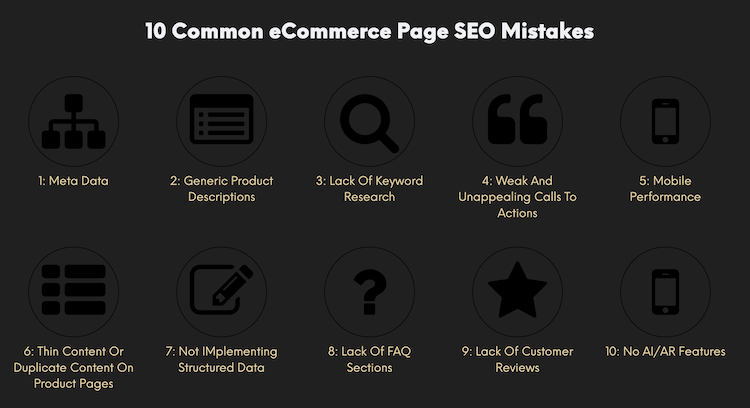
Promote Your Shopify Site With Links
Promotion is exceedingly important for e-commerce websites. That doesn’t necessarily have to mean paid ads.
Remember, organic marketing is what really matters in terms of ranking and speaking to customers. One of the best ways to promote a Shopify site is with links. Sellers can create links from their social media sites and other selling platforms to their Shopify stores and blogs and vice versa. They can also turn to other websites for backlinks.
For example, a store that sells athletic wear could develop a working partnership and link exchange with fitness blogs, companies that sell nutritional supplements, and other relevant websites.
Check out full eCommerce Link Building Strategies guide that will give you all the link building ideas you need to get your Shopify site ranking.
Broaden Your SEO With Content Marketing
Content can be an e-commerce store’s gateway to success. Of course, that depends on the content being well-written, filled with helpful information, and inclusive of relevant keywords.
Content marketing takes matters to the next level. Content marketing is the process of using content to promote a business. When combined with SEO, high-quality content can create trust among consumers and draw attention from search engines.
That content can be used across different components of a brand’s online presence to build even greater awareness and bring in new leads.
Learn How To Create Blog Content That Builds An eCommerce Stores Brand (and ranks for SEO) - this resource gives you the full outline of generating blog content for your shopify site that drives more traffic & ranks for competitive terms.
Monitor Results and Constantly Refine SEO Efforts
Getting a solid SEO strategy off the ground is only the beginning. Maintaining effective SEO is an ongoing process.
It requires constant monitoring and a willingness and ability to change along with market conditions, search engine updates, and consumer mindsets. We’ve already mentioned some of the most helpful tools to use for developing an SEO plan and keeping up with its effectiveness.
Those include:
- Ahrefs
- Semrush
- Google Search Console
- Rank Tracking Software
- Linkcious SEO Power UP
- SEO Booster
- Crush.pics SEO Image Optimiser.
Shopify also lists an extensive range of other tools and apps in its app store.
Final Thoughts: Is Shopify a Suitable Platform to Rank In Google?
The short answer here is yes.
We've ranked plenty of clients #1 on Google using Shopify sites. This platform has a strong focus on SEO.
It makes ample SEO resources available to its retailers and works with a long list of both free and paid third-party apps and tools. It even covers many of the integral aspects of SEO on behalf of its users.
Shopify is also designed to work well for beginners to e-commerce and SEO, veterans in the industry, and everyone in between. Its stores are known for ranking well in Google and other search engines.
It allows store owners to be proactive in their SEO efforts for a more customised, branded approach as well. Though Shopify isn’t necessarily the right choice for all retailers, it certainly offers plentiful benefits for most.
How We Can Help You Rank Your Shopify Site
We've worked with a lot of Shopify site owners and helped them build, rank and grow their websites.
As you can tell in this guide there a is a lot to getting SEO right on a Shopify site.
This guide gives you everything you need, however if you'd like to learn more about our eCommerce SEO services we encourage you to get in touch with us to see how we can help you rank your Shopify site too.
